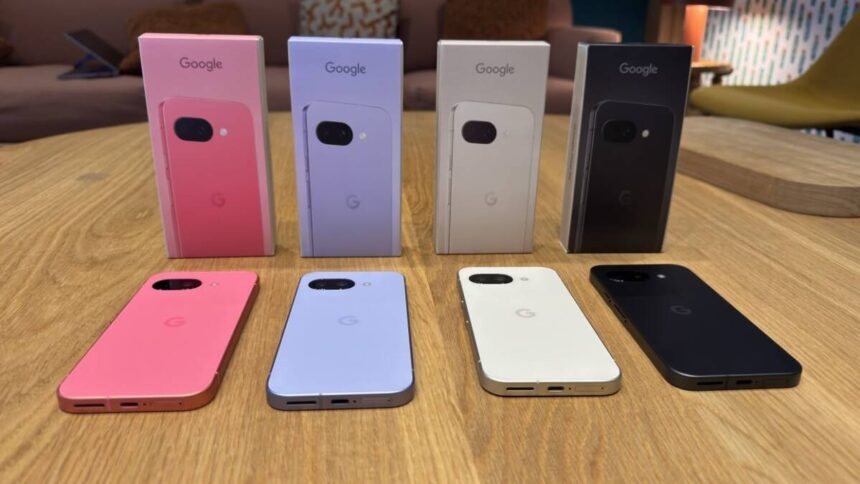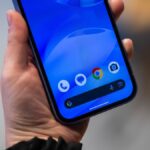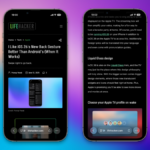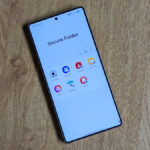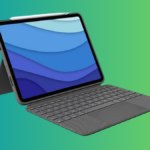Comparing Affordability: iPhone 16e vs. Pixel 9a
The debate is on: Is it better to opt for the budget-friendly iPhone 16e or the Google Pixel 9a? Priced at $100 less than the iPhone, the Pixel 9a boasts impressive AI capabilities and specifications borrowed from its flagship sibling, the Pixel 9. While the Pixel 9a is set to hit the shelves in April, the iPhone 16e is already available for those who can’t wait (check out its comparison with Samsung’s A-series smartphones).
Design Aesthetics
Both smartphones exhibit a similar visual design. They feature straight edges, flat surfaces, and gently rounded corners. Notably, the Pixel 9a distinguishes itself from its high-end equivalent by lacking a camera protrusion, lending it a sleek appearance akin to the iPhone.
Credit: Michelle Ehrhardt
On the front side, the iPhone adopts a notch design rather than the Dynamic Island of the premium models, while the Pixel 9a opts for a circular cutout at the upper section for the selfie camera.
In terms of weight, the Pixel 9a clocks in at 6.6 ounces, whereas the iPhone 16e is slightly lighter at 5.9 ounces.
The color palette for the iPhone 16e is limited to classic Black and White, while the Pixel 9a is available in four hues: Porcelain, Obsidian, Peony, and Iris, with Peony being a soft pink and Iris showcasing a blend of purple and lavender tones.
Display Quality
The Pixel 9a features a 6.3-inch OLED display with a resolution of 2,424 x 1,080 pixels, supporting a variable refresh rate ranging from 60 to 120Hz and achieving a peak brightness of 2700 nits (with a typical brightness of 1800 nits).
In contrast, the iPhone 16e comes with a smaller 6.1-inch OLED screen that has a resolution of 2,532 x 1,170 pixels. It offers a fixed refresh rate of 60Hz and reaches a maximum brightness of 1200 nits, with a typical brightness of 800 nits.
At first glance, it appears the Pixel 9a has the superior display, providing a larger, clearer, and far brighter screen compared to the iPhone.
Performance Metrics
The chips within the iPhone 16e and Pixel 9a come from the same manufacturer as their flagship models. The iPhone is equipped with the Apple A18 chip (with one GPU core disabled), which is also found in the iPhone 16 series, while the Pixel 9a runs on the Google Tensor G4 chip, similar to the Pixel 9. Both devices carry 8GB of RAM, a reduction compared to their premium counterparts.
Although benchmark scores for the Pixel 9a haven’t been released yet, comparisons can be drawn from the Pixel 9. This device scored 1,657 for single-core and 4,060 for multi-core performance in Geekbench.
On the other hand, the iPhone 16e surpasses it with scores of 2,706 for single-core and 7,942 for multi-core tests.
These evaluations suggest the iPhone 16e delivers stronger performance than the Pixel 9a. Nonetheless, both devices should efficiently handle everyday tasks, although the more powerful A18 chip may provide greater longevity for the iPhone 16e.
Camera Capabilities
The iPhone 16e features a solitary camera with a 48MP lens on the back, while the Pixel 9a comes equipped with a dual camera setup, consisting of a 48MP (f/1.7) main lens and an additional 13MP (f/2.2) ultra-wide sensor. Although the larger aperture of Apple’s lens is likely to enhance low-light performance.
Both devices are capable of recording 4K video at 30 or 60 frames per second, with the iPhone also accommodating 24 and 25 frames per second options.
Both the iPhone and Pixel lines have built strong reputations for photography, often differing only in their computational imaging styles. Each device is equipped with unique AI editing features, but the true effectiveness will only be clear once the Pixel 9a officially releases.
Battery Endurance
When it comes to battery life, both devices promise substantial performance. The Pixel 9a houses a robust 5,100 mAh battery, boasting over 30 hours of usage.
Conversely, the iPhone 16e is fitted with a 4,004 mAh battery. Apple claims it offers the longest battery life of any iPhone, with up to 26 hours of offline video playback or 21 hours for streaming. In a real-world battery benchmark conducted by PCMag, the iPhone lasted for 21 hours and 39 minutes, though the Pixel 9a’s battery tests remain unconfirmed.
Pricing Overview
The Pixel 9a clearly presents a more affordable option. It starts at $499 for the 128GB model, with an upgrade to 256GB priced at $559.
In comparison, the iPhone 16e begins at $599 for 128GB and escalates to $699 for 256GB or $899 for 512GB.
This price comparison is especially noteworthy considering that while the iPhone 16e is currently available, the Pixel 9a will not begin shipping until April 2025.
Choosing the Right Phone for You
Your decision will largely depend on the ecosystem you prefer. For those who wish to seamlessly connect with a Mac, the iPhone 16e is likely the more suitable option. However, if an Android device is what you seek, the Pixel 9a may align more closely with your needs.
If cutting-edge AI features are a top priority, the Pixel 9a could have an advantage, featuring built-in Gemini Nano and an app for various AI functionalities such as Gemini Live and AI photo editing. The iPhone’s Apple Intelligence also includes AI capabilities like Writing Tools and photo editing, but enhanced AI functionalities through Siri are still in the works.
From a hardware perspective, those looking for longevity in their devices might prefer the iPhone 16e, given its relatively superior chipset. Nevertheless, the Pixel 9a stands out as the winner in terms of value, not only being $100 cheaper at entry-level pricing, but also offering a $140 lower cost for the 256GB version compared to the iPhone 16e.


